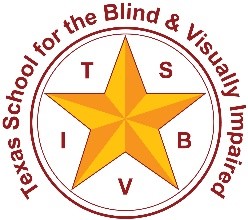The Arc of a Conversation
Question: What is the basis of a language that does not rely on the concepts of seeing and hearing ?
A Great Conversation
What comes to mind when I ask, ” What is your idea of a great conversation?” You might answer by saying that you felt heard, that your partner was listening to what you had to say. That the topic was of interest. You might say that your partner’s listening made you feel affirmed, without judgement and without interruption.
In this ideal conversation, there would also be an easy turn-taking; “I talk, you listen – you talk, I listen”. There would be a sharing of information and also a sharing of emotion.
Our conversation would follow an arc that started with a greeting. The arc would rise as our excitement mounts and fall or slow as our emotions ebb. This arc – rising and falling – might be expressed through our body movements, our facial expressions, and the tone of our voice. All to be reflected back at us like a mirror as our partner reacted to what we were communicating.
When you think about it, most of our conversations aren’t started because there’s something that one party wants to simply “tell” the other. Good conversations aren’t a one-sided affair. Many times conversations raise as many questions as they answer. Many times people interact with one another to process something new; something they’re thinking about, something they would like to share with an active partner.
This website’s intention is to start that conversation. To follow the arc of inquiry. The intention isn’t to answer all of the questions that might arise. Rather the hope is that we can offer the greeting that starts a dialogue that goes beyond the pages here; one that might follow us as we interact with the people in our lives, friends, family, colleagues, and especially children who are deafblind.
Deafblind Interaction Menu
Cultural Language of Congenitally Deafblind

And for many of the people who are deafblind, especially young children, that initial language consists of movement, of touch, of rhythm, of ways of discovering things with their bodies. And we can learn to share that language with a young child who is beginning to know the world in that way.
Barbara Miles
Conversations: Connecting and Learning With Persons Who Are Deafblind
What to Anticipate
Unlike many websites that provide “how-to” instructions, this space is meant to be thought provoking, even challenging. We want to take a deep dive into what it means to experience the world primarily through the sense of “touch”, something none of us as sighted and/or hearing people can actually do. We can never be the “expert” when it comes to the world of people who are deafblind, but we can become more empathetic and thoughtful in our approach to interaction. We can discover how the “world of touch” is very interesting and potentially exciting; a different world from our experience. We believe it is important for parents and educators to value the tactile perspective and endeavor to become more fluent in the deafblind child’s primary language of touch.
We also hope that this webspace will cause you to reflect on what it means to be a person who is deafblind and to ask what our role should be as educators and family members who hope to connect on a deeper level. Can we open ourselves to the child’s expertise and learn from him or her about the rich landscape that exists in their tactile world?
We pose questions along the way and encourage you to ponder them as you consider your child or student. We ask you to look and listen to the videos and other content of this webspace with an open and curious mind.
It is our belief that if we want to help our child who is deafblind learn our language, we first have to learn their language. This does not apply in the same way for children who are born with sight or hearing and then lose these senses later on. These individuals, for the most part, will have acquired some aspects of our language (spoken or signed) before they experienced the sensory loss. They may become tactile learners, but their initial experiences are different from a child who has experienced the world from a predominantly tactile perspective from the beginning. We also include as part of our focus, children who have some vision and some hearing at birth, but who need tactile information to make sense of what they see or hear. They too have a vastly different perspective of the world.
Our discussion’s primary focus will be from the perspective of the learner who is congenitally deafblind, but we feel the general concepts presented are universal to all human beings.
Feel free to join the conversational arc by starting at the beginning, with our home page and progressing sequentially through the webspace. Or, take pieces of the dialogue with you from here and there as time and attention allow.

